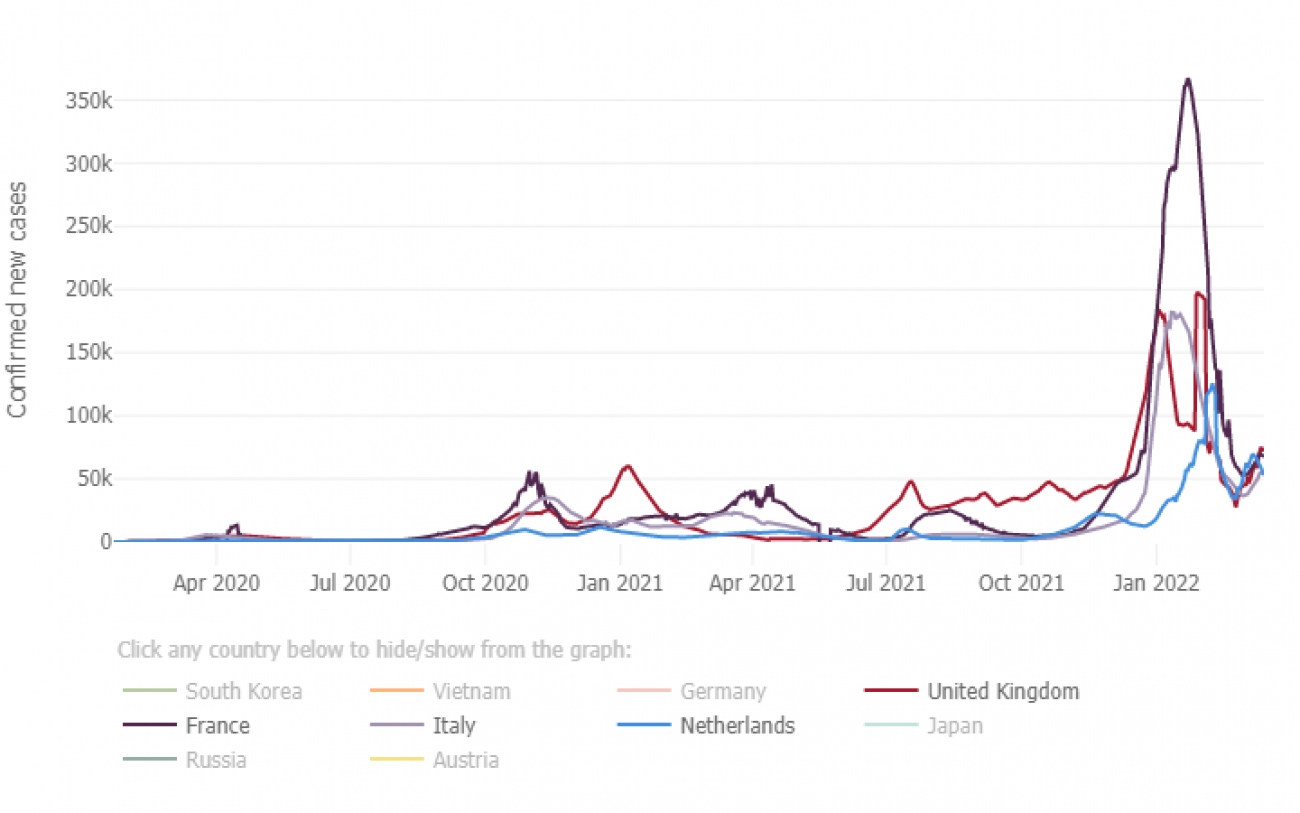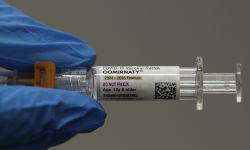Omicron sub-variant BA.2 cases creep up in Michigan; some fear another wave

March 28: More boosters, better guesses: 5 things you still should know about COVID
March 23: COVID vaccine for Michigan children 5 and younger a step closer to reality
A growing share of COVID-19 infections in Michigan now comes from the omicron sub-variant blamed for another wave of cases in western Europe, state officials told Bridge Michigan on Thursday.
So far, there have been 99 cases of the omicron BA.2 sub-variant discovered in Detroit and 21 counties, state health department spokesperson Lynn Sutfin said. The state does not know what percentage of all cases that represents.
This week the Centers for Disease Control and Prevention estimated that omicron BA.2 now accounts for one-quarter of all new infections and 20 percent of cases in the region that includes Michigan.
Related:
- As pandemic wanes, Michigan confronts toll of isolation on homebound seniors
- Michigan closes gap on racial disparities in COVID-19 deaths
- Angry Up North: scars linger after Michigan school mask mandates end
- Michigan State University to relax COVID-19 mask mandate
In Europe, several countries are experiencing rising case counts after a steep decline. The average daily case count is rising in France, the United Kingdom, the Netherlands and Italy. In the United Kingdom, after hitting nearly 300,000 daily cases in early January, daily cases fell to 27,000 in late February, but have recently nearly tripled to 75,000 daily cases.

The sub-variant is not the only factor, experts said. As case counts plummeted, many governments relaxed restrictions on gatherings and masks and many people have resumed in-person work and social gatherings. And increases in cases may be driven by those new, more frequent contacts, not necessarily from the BA.2 sub-variant.
In Michigan, the state has followed new federal guidelines and dropped its recommendation for indoor masking and every county in the state that had a school mask mandate has rescinded them.
Dr. Matthew Sims, infectious diseases research at Beaumont Health, Royal Oak, said he fears that Michigan, like other places, did not keep recommended restrictions in place long enough and there could be an increase in COVID-19.
“We don’t want to see-saw,” he said. “If I had my druthers, we’d keep the controls in place to knock it out and then see what happens.”
In mid-January, Michigan was reporting an average of over 17,000 daily infections at the peak of the omicron surge. Those numbers have fallen dramatically and now the state is averaging 645 cases per day.
The sub-variant is considered more contagious than the original omicron variant, which blasted through the United States and Michigan in December and January, sending case counts to their highest levels of the pandemic.
But experts say BA.2, like the original omicron, is less likely to attack the lungs and those who are vaccinated and boosted are more likely to avoid serious illness, hospitalization and death. And previous infections from omicron provide additional protection from BA.2.
Michigan only sequences a small sample of all cases each week, between 200 and 300, to determine which variants are in the state, Sutfin said. Since Feb. 1, omicron of all sub-variants have comprised 97.2 percent of all cases in Michigan.
Two cases of the BA.2 sub-variant have been detected in Detroit but the greatest number of cases have been found in suburban Wayne County (19 cases), Oakland and Washtenaw counties (15 cases each) and Macomb County (13 cases).
“We continue to monitor for COVID-19 variants of concern and will update Michigan residents about any measures they should take to protect themselves from the virus as needed,” Sutfin told Bridge in an email. The state advocates everyone 5 and older to get the coronavirus vaccines or booster if eligible.
Sutfin noted, however, that omicron BA.2 is not considered a “variant of concern” by the CDC.
Though omicron infections led to fewer serious illnesses, the sheer volume of cases in Michigan — the peak daily average of 17,600 was more than double the previous peak of 7,600 in November— had hospitals treating their highest levels ever of COVID-19 patients, peaking at just over 5,000 statewide on Jan. 10.
And in January, 2,868 died from COVID-19, making it the fourth-deadliest month for the pandemic which began over two years ago.
Michigan, like most of the nation, has reported falling case counts since mid-January and those declines are widespread throughout the state. However, case counts, though still very low compared to the initial omicron wave, have started to rise in Detroit.
With the dramatic drop in new infections and COVID-19 patients, the CDC has loosened its COVID safety recommendations. Now, in all but six of the 83 counties in Michigan, the CDC says healthy people can safely go without a mask in most indoor settings.
See what new members are saying about why they donated to Bridge Michigan:
- “In order for this information to be accurate and unbiased it must be underwritten by its readers, not by special interests.” - Larry S.
- “Not many other media sources report on the topics Bridge does.” - Susan B.
- “Your journalism is outstanding and rare these days.” - Mark S.
If you want to ensure the future of nonpartisan, nonprofit Michigan journalism, please become a member today. You, too, will be asked why you donated and maybe we'll feature your quote next time!








